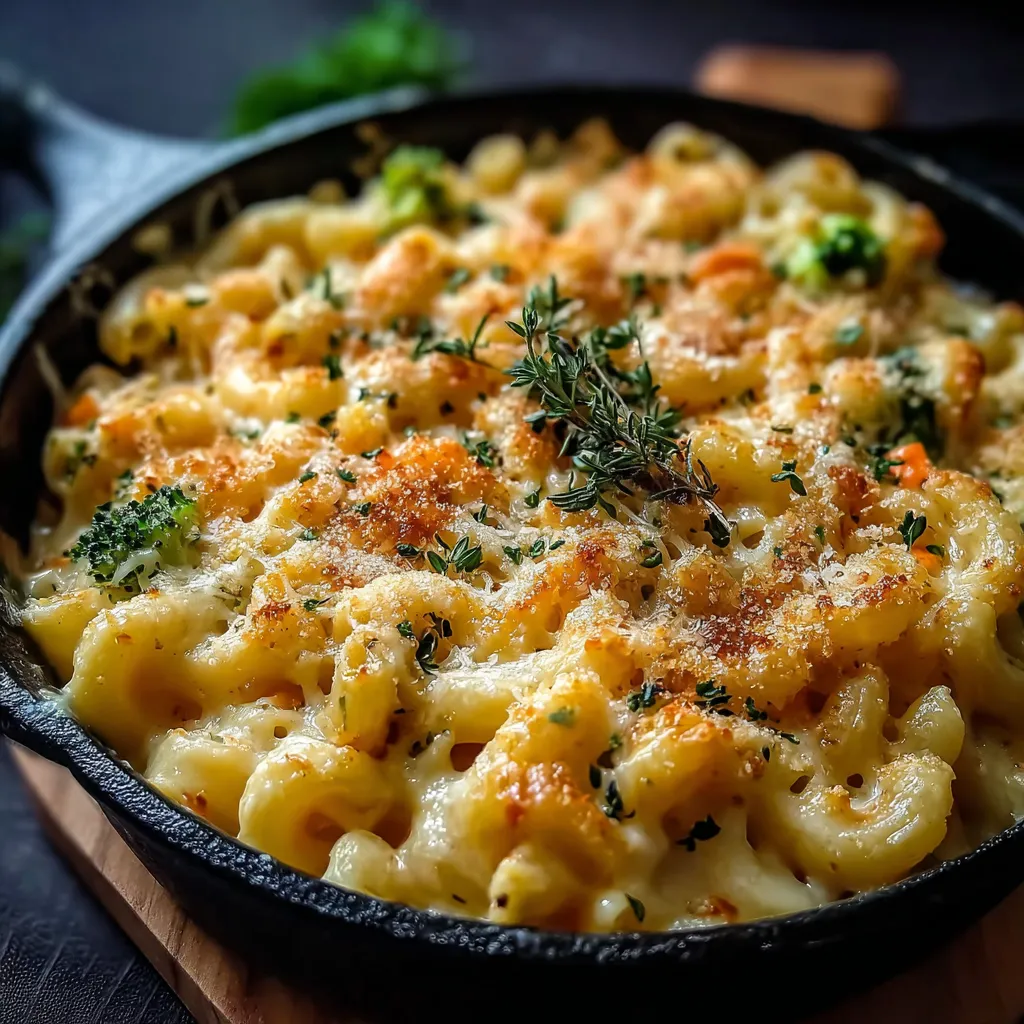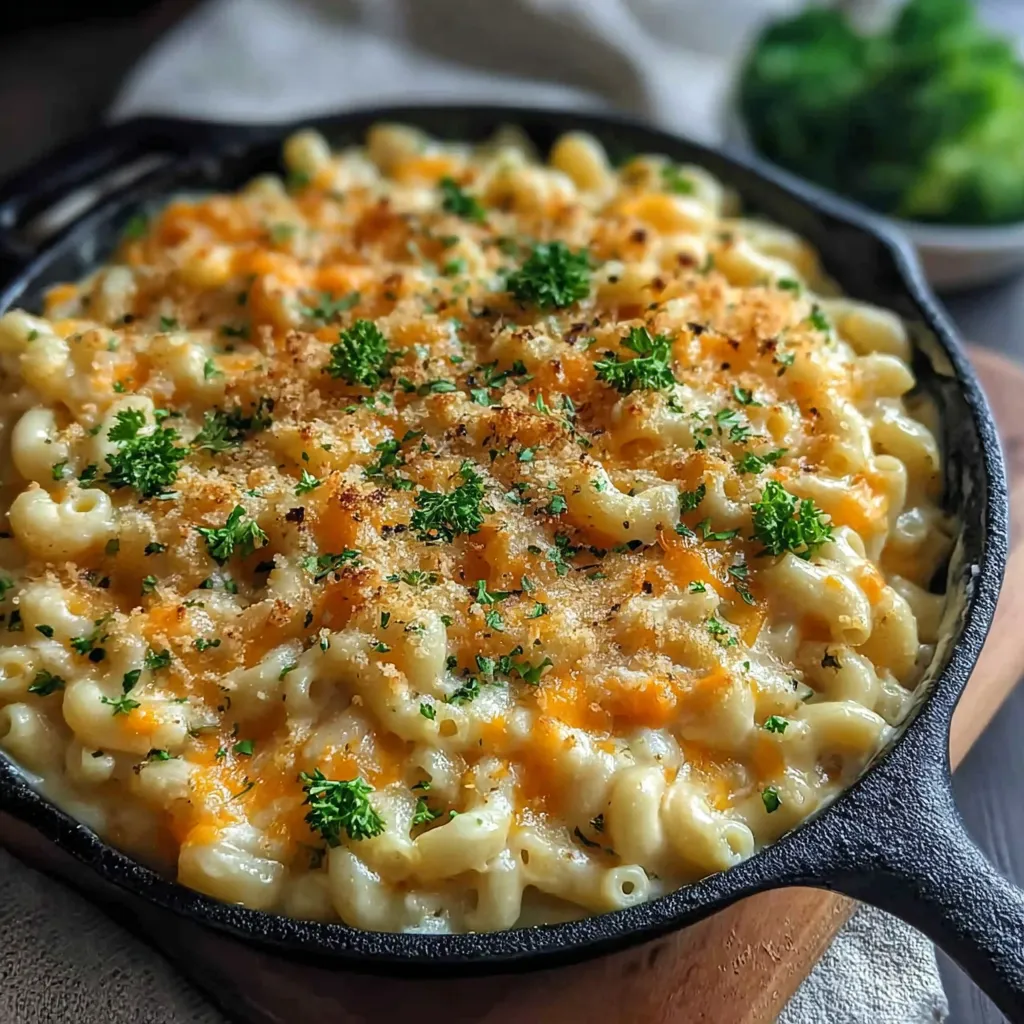 Save
Save
This creamy, veggie-packed mac and cheese has transformed my weeknight dinner routine by combining two family favorites—comfort food and vegetables—into one simple pot. The magic happens when the starchy pasta water combines with cheese to create a silky sauce that coats every bite, while colorful vegetables add nutrition and visual appeal.
I created this recipe during a particularly hectic week when I needed something quick that would please both my cheese-loving partner and my health-conscious self. Now it's become our Thursday night tradition when we're too tired to cook but still want something satisfying.
Ingredients
- 2 cups elbow macaroni or pasta of your choice: perfect for catching creamy sauce in their curves and crevices
- 4 cups vegetable broth or water: using broth adds an extra layer of flavor that elevates the entire dish
- 1 cup mixed vegetables: fresh vegetables provide color nutrients and textural contrast
- 2 cups shredded cheese: freshly grated cheese melts more smoothly than pre-shredded varieties with anti-caking agents
- 1 tablespoon olive oil: use a good quality oil for better flavor
- 1 teaspoon garlic powder: provides aromatic depth without the work of mincing fresh garlic
- Salt and pepper to taste: diamond crystal kosher salt works best for seasoning throughout cooking
- Optional spices like paprika or Italian seasoning: these can transform the flavor profile completely
Step-by-Step Instructions
- Sauté the Veggies:
- Heat olive oil in a large pot over medium heat until it shimmers but doesn't smoke. Add your mixed vegetables and cook for 3-4 minutes stirring occasionally. Look for vegetables to brighten in color and slightly soften while maintaining some bite. Properly sautéed vegetables will release moisture and fragrance indicating they're ready for the next step.
- Add Pasta and Broth:
- Add dry pasta to the pot with vegetables distributing it evenly. Pour vegetable broth over the mixture ensuring all pasta is submerged. Stir gently to prevent sticking and bring to a rolling boil which should take approximately 2-3 minutes.
- Cook the Pasta:
- Once boiling reduce heat to maintain a gentle simmer not a rapid boil. Cover with a lid that allows a small amount of steam to escape. Cook for 8-10 minutes stirring every 2 minutes to prevent sticking. The pasta is ready when it's tender but still has slight resistance when bitten and only a small amount of liquid remains about a half cup. This remaining starchy liquid is crucial for the creamy sauce.
- Incorporate the Cheese:
- Remove pot completely from heat before adding cheese this prevents the sauce from breaking. Add shredded cheese in three batches stirring continuously between additions until fully melted. The sauce should coat the back of a spoon if too thick add a splash of milk if too thin let it stand for 2 minutes to thicken.
- Season to Taste:
- Add salt and pepper gradually tasting between additions. A good rule is to start with a quarter teaspoon of salt and a few grinds of pepper then adjust. This is also the time to add optional spices like a quarter teaspoon of paprika for color and subtle smokiness or half a teaspoon of Italian seasoning for an herbal note.
- Serve:
- Portion immediately into warmed bowls. The mac and cheese will continue to thicken as it stands so serve promptly for the creamiest texture. For presentation consider a light sprinkle of additional cheese or a few reserved colorful vegetables on top.
 Save
Save
My personal favorite vegetable combination is broccoli red bell pepper and baby spinach. The broccoli florets catch extra cheese in their flowery tops while the spinach practically melts into the sauce adding nutrients without changing the creamy texture that makes mac and cheese so beloved in my household.
Make Ahead Options
This dish can be fully prepared up to two days in advance and stored in the refrigerator. When reheating add a splash of milk and warm gently over medium-low heat stirring frequently. The pasta will continue to absorb liquid as it sits so the make-ahead version tends to be slightly less saucy but equally delicious. For meal prep consider undercooking the pasta slightly by 1-2 minutes so it doesn't become mushy when reheated.
Substitution Guide
For a gluten-free version substitute regular pasta with brown rice or chickpea pasta adjusting cooking time according to package instructions. Dairy-free eaters can use plant-based cheese alternatives and vegetable broth ensuring all components align with dietary needs. Nutritional yeast about 2 tablespoons makes an excellent flavor booster for vegan versions. Frozen vegetables work perfectly in this recipe just add them directly to the pot without thawing and extend cooking time by 1-2 minutes.
Kid-Friendly Adaptations
Children often approach new foods with caution. To make this dish more appealing to little ones consider pureeing softer vegetables like cooked carrots or squash directly into the cheese sauce where they'll be virtually undetectable. Start with vegetables they already enjoy perhaps tiny broccoli florets or sweet corn kernels. Involving kids in preparation particularly choosing which vegetables to include significantly increases the likelihood they'll try the finished dish.
Recipe FAQs
- → What vegetables work best in this dish?
While broccoli, bell peppers, and spinach are suggested, this dish works beautifully with almost any vegetables. Try peas, carrots, zucchini, cauliflower, or cherry tomatoes. Leafy greens like kale work well when added in the final few minutes of cooking. For frozen vegetables, add them directly without thawing for best texture.
- → Can I make this dairy-free or vegan?
Absolutely! Simply substitute the cheese with your favorite vegan cheese alternative. For extra creaminess, consider adding a splash of unsweetened plant-based milk or a few tablespoons of nutritional yeast for a cheesy flavor. The vegetable broth already keeps the base of this dish plant-friendly.
- → How do I store and reheat leftovers?
Store leftovers in an airtight container in the refrigerator for up to 3 days. When reheating, add a small splash of milk or broth to restore creaminess, then warm gently on the stovetop or microwave on medium power, stirring occasionally to ensure even heating.
- → Can I use different pasta shapes?
Yes, you can substitute elbow macaroni with other short pasta shapes like shells, rotini, or penne. Keep in mind that different pasta shapes may require slight adjustments to cooking time. For whole grain or gluten-free pasta, check the specific cooking instructions and adjust broth amounts accordingly as they may absorb liquid differently.
- → What are some good garnishes or add-ins for this dish?
Enhance your mac and cheese with toppings like toasted breadcrumbs, chopped fresh herbs (parsley, chives, basil), a sprinkle of red pepper flakes for heat, or a drizzle of hot sauce. For added protein, consider stirring in white beans, chickpeas, or precooked chicken. A squeeze of lemon juice just before serving adds brightness to balance the richness.
- → Why make mac and cheese in one pot?
The one-pot method creates a naturally creamier sauce as the pasta releases starch directly into the cooking liquid. This technique also saves time, reduces cleanup, and concentrates flavors as everything cooks together. The vegetables infuse the pasta and sauce with their flavors, creating a more cohesive dish than traditional methods where components are cooked separately.
